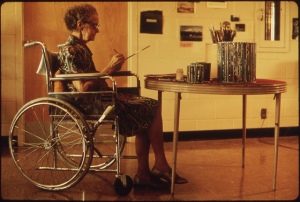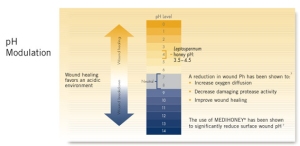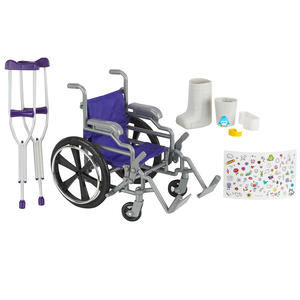Revision to the Medicare Benefits Manual Chapter 7
Medicare recently revised the Medicare Benefits Manual Chapter 7 to bring it into line with last year’s court decision that potential for improvement could not be considered when making a determination of benefit eligibility. The revisions have implications for the clinician for several reasons. One, it means your Agency may be keeping patients that may have been discharged in the past for reaching their maximum potential. And although the revisions which Medicare calls a clarification of the rules may appear to apply to therapy they also apply to nursing.
Section 40.1.1 – General Principles Governing Reasonable and Necessary Skilled Nursing Care states in part: “Skilled nursing services are covered where such skilled nursing services are necessary to maintain the patient’s current condition or prevent or slow further deterioration so long as the beneficiary requires skilled care for the services to be safely and effectively provided.” But having said that the revision goes on to clarify the importance of documentation. It states: “When, however, the individualized assessment does not demonstrate such a necessity for skilled care, including when the services needed do not require skilled nursing care because they could safely and effectively be performed by the patient or unskilled caregivers, such services will not be covered under the home health benefit.”
The revision further emphasizes the importance of the documentation in every clinical note by giving specific guidance for documentation. It says in part:
“As such, it is expected that the home health records for every visit will reflect the need for the skilled medical care provided. These clinical notes are also expected to provide important communication among all members of the home care team regarding the development, course and outcomes of the skilled observations, assessments, treatment and training performed. Taken as a whole then, the clinical notes are expected to tell the story of the patient’s achievement towards his/her goals as outlined in the Plan of Care. In this way, the notes will serve to demonstrate why a skilled service is needed.”
“Therefore the home health clinical notes must document as appropriate:
• the history and physical exam pertinent to the day’s visit, (including the response or changes in behavior to previously administered skilled services) and the skilled services applied on the current visit, and
• the patient/caregiver’s response to the skilled services provided, and
• the plan for the next visit based on the rationale of prior results,
• a detailed rationale that explains the need for the skilled service in light of the patient’s overall medical condition and experiences,
• the complexity of the service to be performed, and
• any other pertinent characteristics of the beneficiary or home”
“Clinical notes should be written so that they adequately describe the reaction of a patient to his/her skilled care. Clinical notes should also provide a clear picture of the treatment, as well as “next steps” to be taken. Vague or subjective descriptions of the patient’s care should not be used. For example terminology such as the following would not adequately describe the need for skilled care:
• Patient tolerated treatment well
• Caregiver instructed in medication management
• Continue with POC
Objective measurements of physical outcomes of treatment should be provided and/or a clear description of the changed behaviors due to education programs should be recorded in order that all concerned can follow the results of the applied services.”
The manual has revisions to section 40.1.2 Application of the Principles to Skilled Nursing Services also. For instance in section 40.1.2.1 – Observation and Assessment of the Patient’s Condition When Only the Specialized Skills of a Medical Professional Can Determine Patient’s Status there is the following example:
“A patient has chronic non-healing skin ulcers, Diabetes Mellitus Type I, and spinal muscular atrophy. In the past, the patient’s wounds have deteriorated, requiring the patient to be hospitalized. Previously, a skilled nurse has trained the patient’s wife to perform wound care. The treating physician orders a new episode of skilled care, at a frequency of one visit every 2 weeks to perform observation and assessment of the patient’s skin ulcers to make certain that they are not worsening. This order is reasonable and necessary because, although the unskilled family caregiver has learned to care for the wounds, the skilled nurse can use observation and assessment to determine if the condition is worsening.”
In section 40.1.2.3 – Teaching and Training Activities the revision reads in part: “Re-teaching or retraining for an appropriate period may be considered reasonable and necessary where there is a change in the procedure or the patient’s condition that requires re-teaching, or where the patient, family, or caregiver is not properly carrying out the task. The medical record should document the reason that the re-teaching or retraining is required and the patient/caregiver response to the education.”
Section 40.2 – Skilled Therapy Services has also been revised to include the following: “To be covered as skilled therapy, the services must require the skills of a qualified therapist and must be reasonable and necessary for the treatment of the patient’s illness or injury as discussed below. Coverage does not turn on the presence or absence of an individual’s potential for improvement, but rather on the beneficiary’s need for skilled care.”
And again the manual emphasizes the importance of documentation for therapy. In section 40.2.1 – General Principles Governing Reasonable and Necessary Physical Therapy, Speech-Language Pathology Services, and Occupational Therapy it reads:
“As such, it is expected that the home health records for every visit will reflect the need for the skilled medical care provided. These clinical notes are also expected to provide important communication among all members of the home care team regarding the development, course and outcomes of the skilled observations, assessments, treatment and training performed. Taken as a whole then, the clinical notes are expected to tell the story of the patient’s achievement towards his/her goals as outlined in the Plan of Care. In this way, the notes will serve to demonstrate why a skilled service is needed.”
“Therefore the home health clinical notes must document as appropriate:
• the history and physical exam pertinent to the day’s visit , (including the response or changes in behavior to previously administered skilled services) and
• the skilled services applied on the current visit, and
• the patient/caregiver’s immediate response to the skilled services provided, and
• the plan for the next visit based on the rationale of prior results.”
“Clinical notes should be written such that they adequately describe the reaction of a patient to his/her skilled care. Clinical notes should also provide a clear picture of the treatment, as well as “next steps” to be taken. Vague or subjective descriptions of the patient’s care should not be used. For example terminology such as the following would not adequately describe the need for skilled care:
• Patient tolerated treatment well
• Caregiver instructed in medication management
• Continue with POC”
“Objective measurements of physical outcomes of treatment should be provided and/or a clear description of the changed behaviors due to education programs should be recorded in order that all concerned can follow the results of the applied services.
When the skilled service is being provided to either maintain the patient’s condition or prevent or slow further deterioration, the clinical notes must also describe:
• A detailed rationale that explains the need for the skilled service in light of the patient’s overall medical condition and experiences,
• the complexity of the service to be performed, and
• any other pertinent characteristics of the beneficiary or home.”
The revisions provide clarification about a maintenance program. In part it states: “Such a maintenance program to maintain the patient’s current condition or to prevent or slow further deterioration is covered so long as the beneficiary requires skilled care for the safe and effective performance of the program. When, however, the individualized assessment does not demonstrate such a necessity for skilled care, including when the performance of a maintenance program does not require the skills of a therapist because it could safely and effectively be accomplished by the patient or with the assistance of non-therapists, including unskilled caregivers, such maintenance services will not be covered.”
The revisions also specify that a maintenance program should be developed in the last visits of a rehabilitative/restorative treatment. The revision states in part: “When the development of a maintenance program could not be accomplished during the last visits(s) of rehabilitative/restorative treatment, the therapist must document why the maintenance program could not be developed during those last rehabilitative/restorative treatment visit(s).”
I would urge all clinicians to read and become familiar with the revisions in the Medicare Benefits Manual, Chapter 7. They clarify requirements for coverage of patient care and for documentation of that care.



